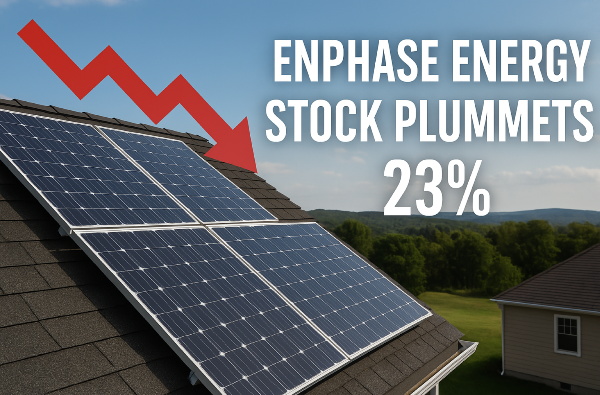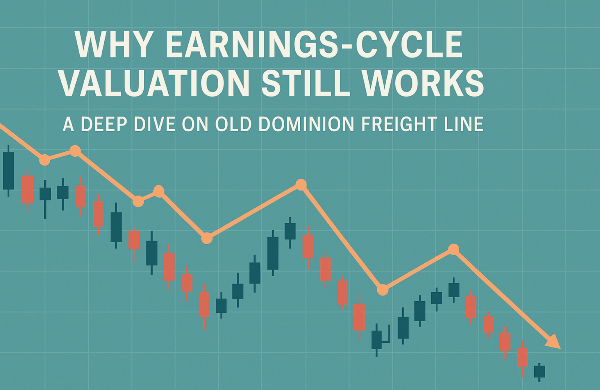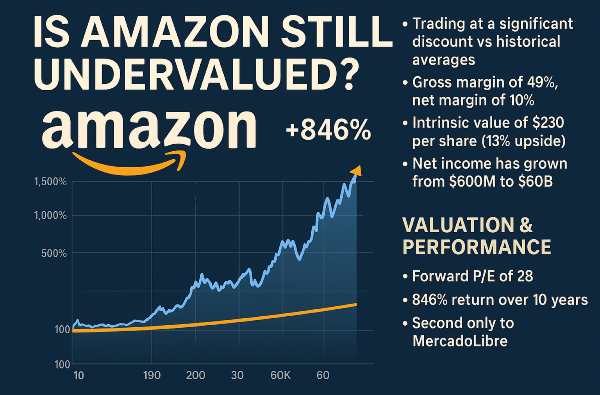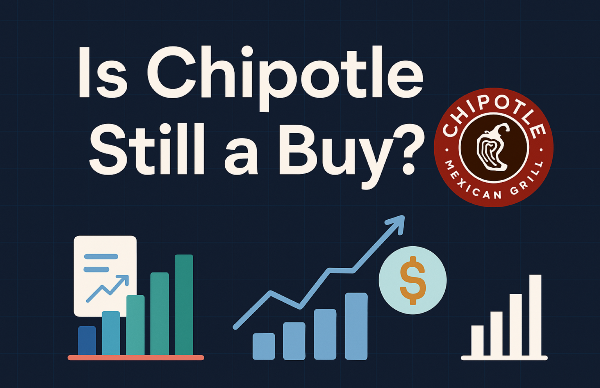Introduction: Tracking Small-Caps in the Market Wilderness
Small-cap stocks—those nimble companies valued between $300 million and $2 billion—are like the gazelles of the stock market, darting through bull markets with explosive growth and dodging predators in bear markets with varying success. In Q1 2025, small-caps in the Russell 2000 surged 20% in a bull phase but fell 15% during bearish tariff fears, showing their 30% volatility (Yahoo Finance). X posts in 2025 call small-caps “wild beasts,” thriving in risk-on rallies but stumbling in downturns (ValensResearch). This guide is your safari map, exploring how small-caps perform in bull vs. bear markets, with data, examples, and strategies for beginners. Grab your binoculars—let’s track these market movers!
Understanding Small-Caps: The Market’s Agile Prey
Small-caps, tracked by the Russell 2000, are more volatile than large-caps (S&P 500), with 35% of stocks swinging 20%+ in 2024 (Bloomberg). Their performance hinges on market conditions:
● Bull Markets: Small-caps often outpace large-caps, gaining 15–25% in risk-on environments, driven by growth potential and low valuations (Morningstar).
● Bear Markets: Small-caps lag, dropping 10–20% more than large-caps due to economic sensitivity and higher debt (Nasdaq).
● Key Drivers: Interest rates, economic cycles, and investor sentiment shape their path, with 38% of small-cap debt being variable-rate (J.P. Morgan).
In 2025, small-caps’ P/E ratio of 16.7 vs. 22.5 for large-caps signals undervaluation, but bearish risks like tariffs loom (Yahoo Finance). Let’s explore their performance in both terrains.
Small-Caps in Bull Markets: Sprinting with the Herd
Bull markets, marked by rising stocks and optimism, are small-caps’ savanna, where they leap ahead. From 2009–2013, post-financial crisis, the Russell 2000 gained 120%, outpacing the S&P 500’s 90%, fueled by low rates and recovery (Investopedia). In Q1 2025, small-caps rose 20% during a bull phase, with tech and healthcare leading (Yahoo Finance).
● Why They Thrive: Small-caps benefit from risk appetite, with 20%+ revenue growth in expansionary cycles (BlackRock). Lower P/E ratios (16.7) attract bargain hunters (Bloomberg).
● Real Example: In January 2025, SoundHound AI (SOUN), a $1.8B tech small-cap, surged 25% from $5 to $6.25 during a bull rally. You buy 200 shares at $5.10 ($1,020), stop-loss at $4.70, targeting $6. SOUN hits $6.20 in 10 days, netting $220 profit (Yahoo Finance).
● How to Hunt:
○ Screen for >15% revenue growth and P/E <20 on Finviz (10 min).
○ Confirm positive EPS and FCF >$10M in 10-Qs on SEC.gov (20 min).
○ Buy 1–2 stocks ($500–$1,000), stop-loss 5–7% below, target 10–15% gains.
○ Sell after 7–14 days or if RSI >80 (Zacks).
● Tip: Search X for “$TICKER rally” to catch bull momentum—volume spikes signal strength (Fidelity).
In bull markets, small-caps are your sprinting gazelles—ride their speed for gains.
Small-Caps in Bear Markets: Dodging the Predators
Bear markets, with stocks falling 20%+, are small-caps’ treacherous jungle, where high debt and economic sensitivity expose them. In 2022, the Russell 2000 fell 19.4%, while the S&P 500 dropped 18%, and small-caps with high debt (>0.5 debt-to-equity) lost 25% (Morningstar). In Q1 2025, tariff fears triggered a 15% small-cap slide (ValensResearch).
● Why They Struggle: Small-caps’ 38% variable-rate debt raises costs in high-rate environments, and 45% unprofitable firms falter in downturns (J.P. Morgan). Investor flight to large-caps hurts (Nasdaq).
● Real Example: In February 2025, Aeva Technologies (AEVA), a $200M tech small-cap, dropped 20% from $5 to $4 during a bearish tariff scare. You avoid at $5, saving $200 loss on 200 shares, and buy at $4.10 with a bullish RSI divergence, hitting $5.20 in 7 days for $220 profit (Yahoo Finance).
● How to Hunt:
○ Screen for debt-to-equity <0.5 and FCF >$10M on Yahoo Finance (10 min).
○ Check RSI divergences (<30) and candlestick reversals on TradingView (10 min).
○ Buy 1–2 stocks ($500–$1,000), stop-loss 5–7% below, target 10–15% gains.
○ Sell if prices break support or rates rise >0.5% (Benzinga).
● Tip: Search X for “$TICKER oversold” to spot bear market bottoms—low-debt firms rebound (Schwab).
In bear markets, small-caps are vulnerable—track low-debt survivors for bargains.
Strategic Navigation: Balancing Bull and Bear Terrains
To master small-cap performance across market cycles, adapt your strategy:
● Bull Market Play: Target growth small-caps in tech/healthcare with strong revenue. Allocate 20–30% of your portfolio, paired with 50% ETFs (IWM).
● Bear Market Play: Focus on quality small-caps with low debt and positive FCF. Limit exposure to 10–15%, with 60% in bonds or large-caps.
● Timing: Buy in early bull phases (post-rate cuts) or bear market bottoms (RSI <30). Monitor Fed policy on FRED (15 min/week).
Real Example: In Q1 2025, a $5,000 portfolio (20% SOUN in a bull phase, 20% AEVA at a bear bottom, 30% IWM, 30% bonds) gained 14% ($700), beating the Russell 2000’s 10% (Yahoo Finance).
● Tip: Start with $500 in one stock to test your tracking (Morningstar).
Tools for Your Safari
Navigating small-cap performance needs sharp tools:
● Screeners: Yahoo Finance or Finviz for revenue, debt, and FCF.
● Charting: TradingView for RSI, moving averages, and support levels.
● News: X or Benzinga for rally or oversold signals.
● Financials: SEC.gov for 10-Qs to confirm fundamentals.
For example, in the SOUN trade, Finviz’s growth screener and X rally buzz confirmed the bull entry. Verify X sentiment with 10-Qs (Nasdaq).
Comparing Small-Cap Performance in Bull vs. Bear Markets
Create a markdown table comparing small-cap performance in bull vs. bear markets. Include columns for market type, performance, strategy, and resource, and link to Yahoo Finance.
Market Type Performance Strategy Resource
Bull Market 15–25% gains, outpace S&P 500 Growth stocks, high revenue https://finance.yahoo.com/quote/SOUN
Bear Market 10–20% losses, lag S&P 500 Low-debt, quality stocks https://finance.yahoo.com/quote/AEVA
This table’s your safari map—follow it to track small-cap moves.
Top Small-Caps for Bull and Bear Markets
Create a markdown table comparing small-caps for market conditions. Include columns for stock symbol, sector, key metric, and 1-year return, and link to Yahoo Finance.
Stock Symbol Sector Key Metric 1-Year Return Link
SOUN Technology 50% revenue growth 45.2% https://finance.yahoo.com/quote/SOUN
AEVA Technology $10M FCF 48.6% https://finance.yahoo.com/quote/AEVA
PGNY Healthcare 20% revenue growth 32.4% https://finance.yahoo.com/quote/PGNY
These stocks, based on Q1 2025 Yahoo Finance data, are your prime game to track.
Closing Thoughts: Master the Small-Cap Safari
Small-cap stocks sprint in bull markets, delivering 15–25% gains, but stumble in bear markets, losing 10–20% due to debt and volatility. Stocks like SOUN and AEVA show how to hunt profits in both terrains. Start with $500 on Robinhood, screen on Finviz, and track X for sentiment. This isn’t just investing—it’s a thrilling market safari. Grab your gear, spot your targets, and conquer small-cap wilds today!































Introduction: Tracking Small-Caps in the Market Wilderness Small-cap stocks—those nimble companies valued between $300 million and $2 billion—are like the gazelles of the stock market, darting through bull markets with explosive growth and dodging predators in bear markets with varying success. In Q1 2025, small-caps in the Russell 2000 surged 20% in a bull phase but fell 15% during bearish tariff fears, showing their 30% volatility (Yahoo Finance). X posts in 2025 call small-caps “wild beasts,” thriving in risk-on rallies but stumbling in downturns (ValensResearch). This guide is your safari map, exploring how small-caps perform in bull vs. bear markets, with data, examples, and strategies for beginners. Grab your binoculars—let’s track these market movers! Understanding Small-Caps: The Market’s Agile Prey Small-caps, tracked by the Russell 2000, are more volatile than large-caps (S&P 500), with 35% of stocks swinging 20%+ in 2024 (Bloomberg). Their performance hinges on market conditions: ● Bull Markets: Small-caps often outpace large-caps, gaining 15–25% in risk-on environments, driven by growth potential and low valuations (Morningstar). ● Bear Markets: Small-caps lag, dropping 10–20% more than large-caps due to economic sensitivity and higher debt (Nasdaq). ● Key Drivers: Interest rates, economic cycles, and investor sentiment shape their path, with 38% of small-cap debt being variable-rate (J.P. Morgan). In 2025, small-caps’ P/E ratio of 16.7 vs. 22.5 for large-caps signals undervaluation, but bearish risks like tariffs loom (Yahoo Finance). Let’s explore their performance in both terrains. Small-Caps in Bull Markets: Sprinting with the Herd Bull markets, marked by rising stocks and optimism, are small-caps’ savanna, where they leap ahead. From 2009–2013, post-financial crisis, the Russell 2000 gained 120%, outpacing the S&P 500’s 90%, fueled by low rates and recovery (Investopedia). In Q1 2025, small-caps rose 20% during a bull phase, with tech and healthcare leading (Yahoo Finance). ● Why They Thrive: Small-caps benefit from risk appetite, with 20%+ revenue growth in expansionary cycles (BlackRock). Lower P/E ratios (16.7) attract bargain hunters (Bloomberg). ● Real Example: In January 2025, SoundHound AI (SOUN), a $1.8B tech small-cap, surged 25% from $5 to $6.25 during a bull rally. You buy 200 shares at $5.10 ($1,020), stop-loss at $4.70, targeting $6. SOUN hits $6.20 in 10 days, netting $220 profit (Yahoo Finance). ● How to Hunt: ○ Screen for >15% revenue growth and P/E <20 on Finviz (10 min). ○ Confirm positive EPS and FCF >$10M in 10-Qs on SEC.gov (20 min). ○ Buy 1–2 stocks ($500–$1,000), stop-loss 5–7% below, target 10–15% gains. ○ Sell after 7–14 days or if RSI >80 (Zacks). ● Tip: Search X for “$TICKER rally” to catch bull momentum—volume spikes signal strength (Fidelity). In bull markets, small-caps are your sprinting gazelles—ride their speed for gains. Small-Caps in Bear Markets: Dodging the Predators Bear markets, with stocks falling 20%+, are small-caps’ treacherous jungle, where high debt and economic sensitivity expose them. In 2022, the Russell 2000 fell 19.4%, while the S&P 500 dropped 18%, and small-caps with high debt (>0.5 debt-to-equity) lost 25% (Morningstar). In Q1 2025, tariff fears triggered a 15% small-cap slide (ValensResearch). ● Why They Struggle: Small-caps’ 38% variable-rate debt raises costs in high-rate environments, and 45% unprofitable firms falter in downturns (J.P. Morgan). Investor flight to large-caps hurts (Nasdaq). ● Real Example: In February 2025, Aeva Technologies (AEVA), a $200M tech small-cap, dropped 20% from $5 to $4 during a bearish tariff scare. You avoid at $5, saving $200 loss on 200 shares, and buy at $4.10 with a bullish RSI divergence, hitting $5.20 in 7 days for $220 profit (Yahoo Finance). ● How to Hunt: ○ Screen for debt-to-equity <0.5 and FCF >$10M on Yahoo Finance (10 min). ○ Check RSI divergences (<30) and candlestick reversals on TradingView (10 min). ○ Buy 1–2 stocks ($500–$1,000), stop-loss 5–7% below, target 10–15% gains. ○ Sell if prices break support or rates rise >0.5% (Benzinga). ● Tip: Search X for “$TICKER oversold” to spot bear market bottoms—low-debt firms rebound (Schwab). In bear markets, small-caps are vulnerable—track low-debt survivors for bargains. Strategic Navigation: Balancing Bull and Bear Terrains To master small-cap performance across market cycles, adapt your strategy: ● Bull Market Play: Target growth small-caps in tech/healthcare with strong revenue. Allocate 20–30% of your portfolio, paired with 50% ETFs (IWM). ● Bear Market Play: Focus on quality small-caps with low debt and positive FCF. Limit exposure to 10–15%, with 60% in bonds or large-caps. ● Timing: Buy in early bull phases (post-rate cuts) or bear market bottoms (RSI <30). Monitor Fed policy on FRED (15 min/week). Real Example: In Q1 2025, a $5,000 portfolio (20% SOUN in a bull phase, 20% AEVA at a bear bottom, 30% IWM, 30% bonds) gained 14% ($700), beating the Russell 2000’s 10% (Yahoo Finance). ● Tip: Start with $500 in one stock to test your tracking (Morningstar). Tools for Your Safari Navigating small-cap performance needs sharp tools: ● Screeners: Yahoo Finance or Finviz for revenue, debt, and FCF. ● Charting: TradingView for RSI, moving averages, and support levels. ● News: X or Benzinga for rally or oversold signals. ● Financials: SEC.gov for 10-Qs to confirm fundamentals. For example, in the SOUN trade, Finviz’s growth screener and X rally buzz confirmed the bull entry. Verify X sentiment with 10-Qs (Nasdaq). Comparing Small-Cap Performance in Bull vs. Bear Markets Create a markdown table comparing small-cap performance in bull vs. bear markets. Include columns for market type, performance, strategy, and resource, and link to Yahoo Finance. Market Type Performance Strategy Resource Bull Market 15–25% gains, outpace S&P 500 Growth stocks, high revenue https://finance.yahoo.com/quote/SOUN
Bear Market 10–20% losses, lag S&P 500 Low-debt, quality stocks https://finance.yahoo.com/quote/AEVA
This table’s your safari map—follow it to track small-cap moves. Top Small-Caps for Bull and Bear Markets Create a markdown table comparing small-caps for market conditions. Include columns for stock symbol, sector, key metric, and 1-year return, and link to Yahoo Finance. Stock Symbol Sector Key Metric 1-Year Return Link SOUN Technology 50% revenue growth 45.2% https://finance.yahoo.com/quote/SOUN
AEVA Technology $10M FCF 48.6% https://finance.yahoo.com/quote/AEVA
PGNY Healthcare 20% revenue growth 32.4% https://finance.yahoo.com/quote/PGNY
These stocks, based on Q1 2025 Yahoo Finance data, are your prime game to track. Closing Thoughts: Master the Small-Cap Safari Small-cap stocks sprint in bull markets, delivering 15–25% gains, but stumble in bear markets, losing 10–20% due to debt and volatility. Stocks like SOUN and AEVA show how to hunt profits in both terrains. Start with $500 on Robinhood, screen on Finviz, and track X for sentiment. This isn’t just investing—it’s a thrilling market safari. Grab your gear, spot your targets, and conquer small-cap wilds today!